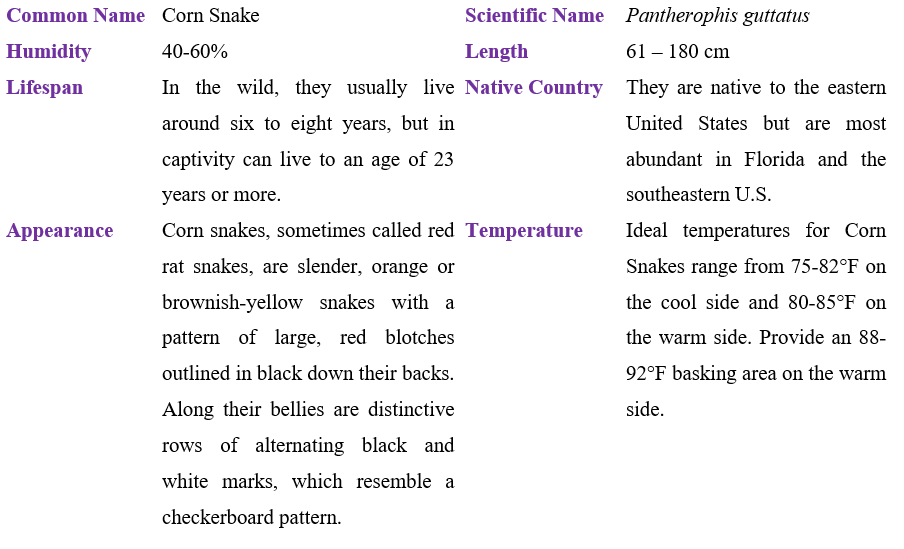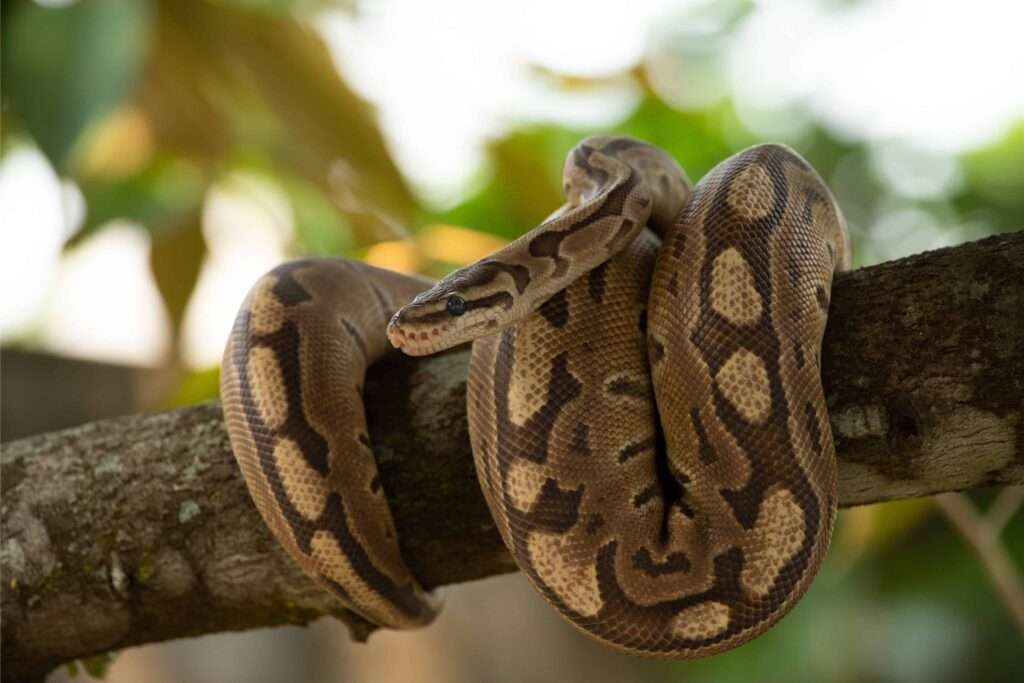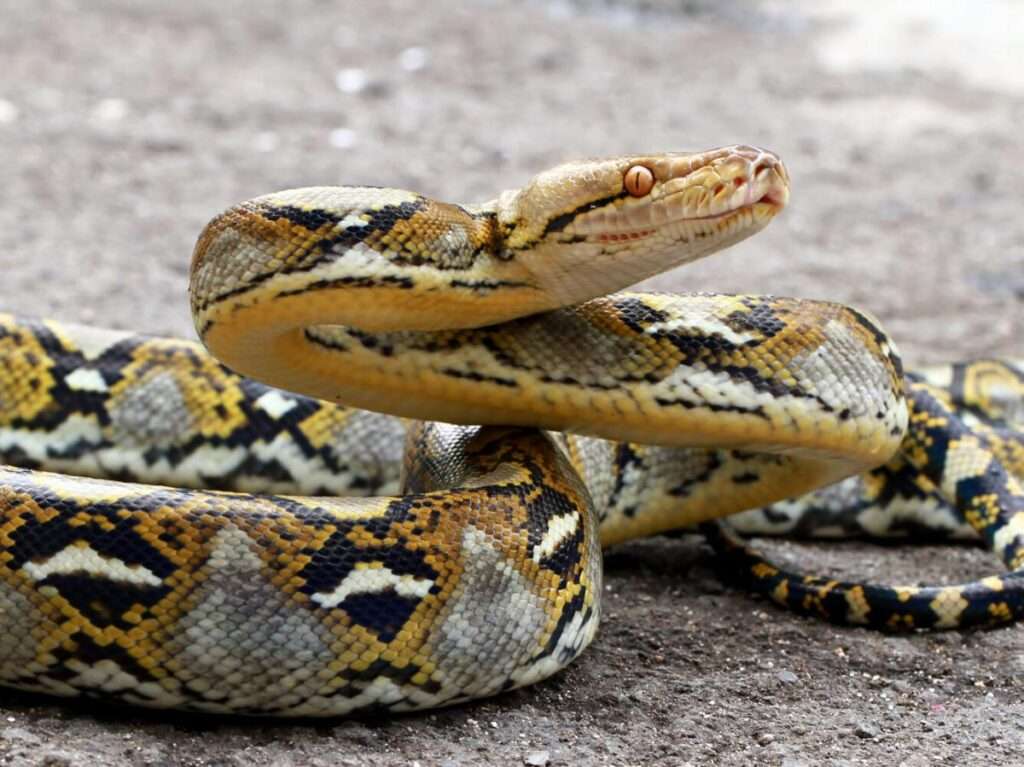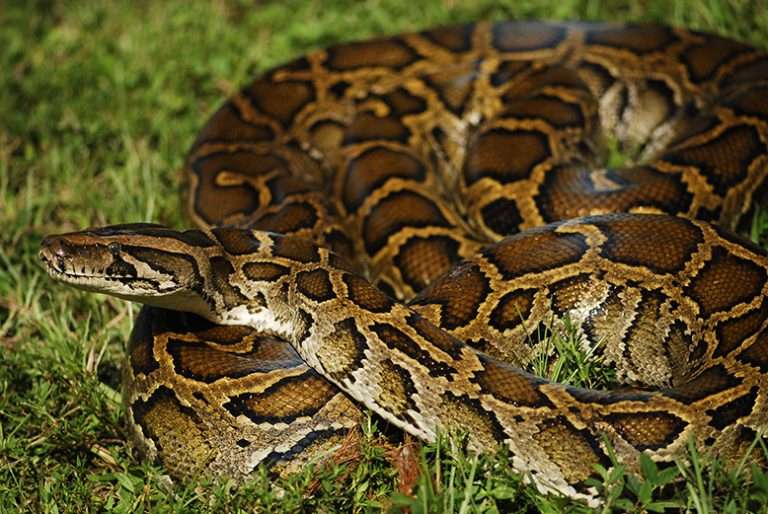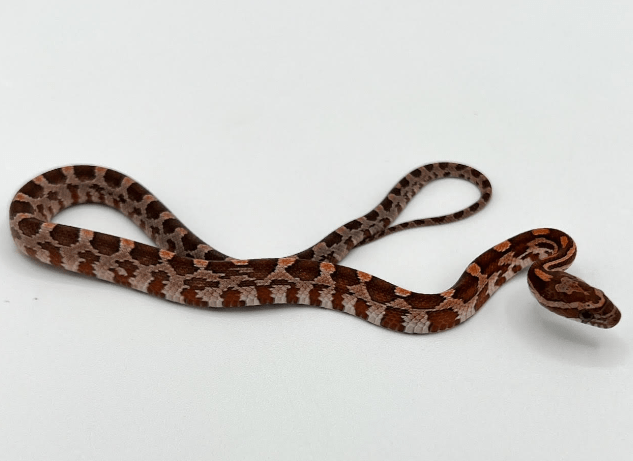
Description
Scientific Name: Pantherophis guttatus
Lifespan: They typically live six to eight years in the wild, but in captivity, they can live up to or past the age of 23.
The corn snake, also known as the red rat snake, is a slim, orange or brownish-yellow snake with huge, red streaks running down its back.
A characteristic checkerboard-like pattern of rows of alternately black and white marks may be seen along their bellies. The similarity between these marks and the checkered pattern of maize or Indian maize kernels may be where the name “corn snake” first appeared. Depending on their age and geographic region, these snakes display significant variances in colour and pattern.
Native Region/Habitat
In the eastern United States, corn snakes can be found from southern New Jersey to Florida, into Louisiana, and in some areas of Kentucky. Florida and other southeastern states have the greatest concentration of them.
These snakes can be found living in wooded groves, rocky hillsides, meadows, woodlots, rocky open spaces, tropical hammocks, barns, and abandoned structures.
Behavior
When under stress, they do not have a tendency to bite, urinate, or constrict, and they appreciate the occasional handling. Despite efforts by herpetoculturists to totally domesticate the corn snake, some species, and especially young ones, will occasionally revert to their wild tendencies.
When under stress, they do not have a tendency to bite, urinate, or constrict, and they appreciate the occasional handling. Despite efforts by herpetoculturists to totally domesticate the corn snake, some species, and especially young ones, will occasionally return to their wild tendencies.
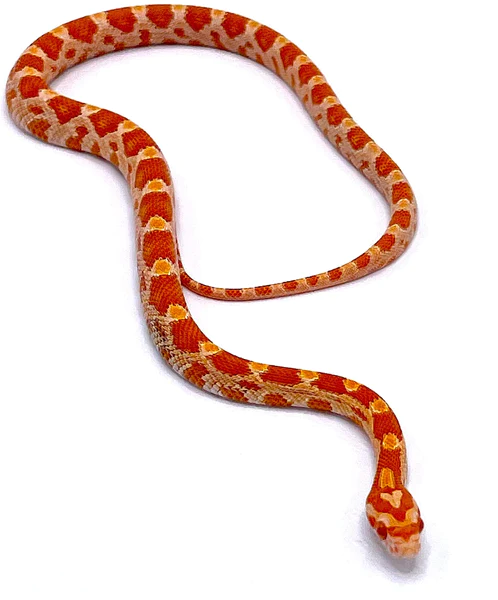
Care as a Pet/In Captivity
Housing:
A 20-gallon glass tank (or a longer and shallower variation of the 20-gallon tank) makes a suitable home for a corn snake. Use a cover that is tightly fitting and can be fastened down from the top. Corn snakes require a place to hide in order to feel safe.
Heat:
Maintaining the proper temperature in your corn snake’s home is essential. Although corn snakes do not require tropical temperatures because they are native to temperate areas, an overhead incandescent heat lamp is the optimum heating source. Maintain a temperature of 80 to 85 degrees around you. Between 85 and 88 F is the perfect temperature for a sunbathing area. The lowest temperature at night should only be 75 degrees Fahrenheit. If you wish to check the temperature inside the enclosure, use thermometers
Humidity:
Fortunately, the humidity found in a typical home is pleasant to corn snakes. Between 35 to 60 percent should make up the cage’s ambient air; the higher end of this range will promote healthy shedding. In particular, during the drier winter months, when you might need to mist the tank more frequently or refill an evaporating water bowl, hygrometer monitoring is crucial for your corn snake habitat.
Food and Water:
When pursuing their prey in the wild, they primarily rely on smell rather than sight. Corn snakes kept in captivity should be fed pre-killed frozen mice that have been properly thawed. For hatchlings, pinkie mice should be the main prey, and as the snake grows, the size of the prey should also increase. It’s possible for the prey item to be significantly wider than the snake’s head. While developing snakes should be fed twice weekly, adult snakes simply need to be given one suitable-sized prey item per week or two.
A water dish is also required because corn snakes do consume water by absorbing it through their jaws; the water must be kept immaculately clean. When this happens, dump the dish, clean it up, and re-fill it right away. Snakes frequently use their water to help them urinate. A sturdy, shallow dish with a few inches of diameter works well as a water source. In the dish, especially before a shed, you might even find your snake soaking. When possible, use non-chlorinated water.
Table
